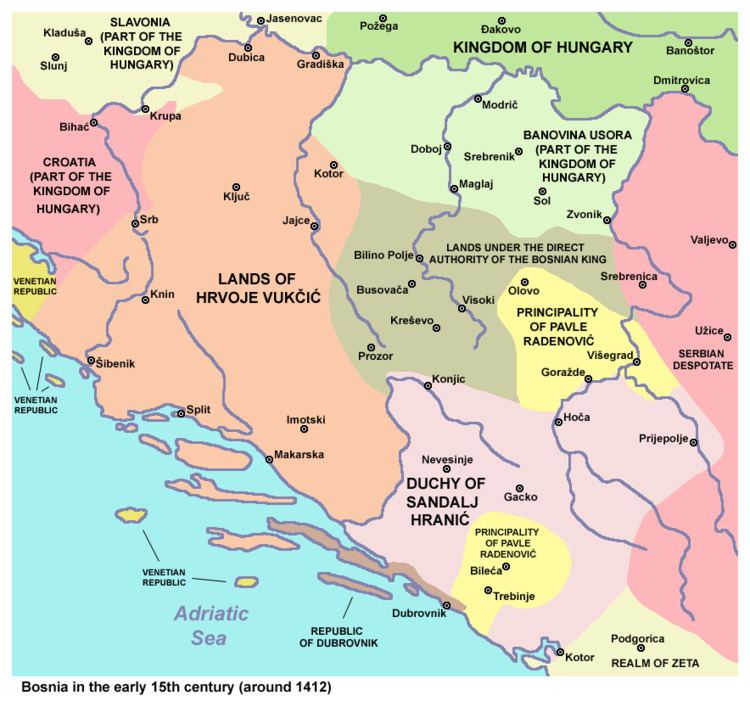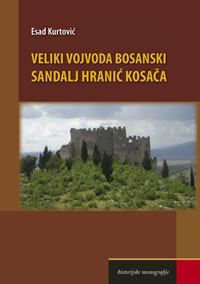Reign 1392—1435 Name Sandalj Hranic Died 15 March 1435 | Successor Stjepan Vukcic Kosaca Predecessor Vlatko Vukovic | |
 | ||
Spouse(s) Jelena, widow of Radic CrnojevicKatarina, niece of Hrvoje Vukcic HrvatinicJelena Balsic | ||
Sandalj Hranić Kosača (Cyrillic: Сандаљ Хранић Косача; 1370 – 15 March 1435) was a Bosnian magnate who ruled the area between Neretva and Drina rivers in Bosnia with the title Grand Duke of Bosnia between 1392 and his death in 1435. He was married three times, but had no children. After his death, he was succeeded by his nephew Stjepan Vukčić Kosača.
Marriages and foreign policy
As the head of the House of Kosača, Sandalj Hranić succeeded his uncle Vlatko Vuković in 1392.

In 1403, Radič Sanković led the attacks on Dubrovnik during the Bosnian-Ragusan War in the name of King Stephen Ostoja. Sandalj Hranić captured and blinded Radič, and held him in prison until his death in 1404. When King Ladislaus of Naples sold his rights to the kingdom of Dalmatia to the Republic of Venice and retreated from the Balkans in 1409, many local nobles allied themselves with Holy Roman Emperor Sigismund and accepted Stephen Ostoja as King of Bosnia. This seriously weakened the position of Hrvoje Vukčić Hrvatinić, whose niece Katarina was Sandalj's second wife. In such circumstances Sandalj also allied with Emperor Sigismund in mid 1411 and decided to establish closer connections with Sigismund's important ally Stefan Lazarević by marrying his widowed sister Jelena. Sandalj divorced Katarina in December 1411 and married Jelena at the end of the same year. This marriage had its important political consequences because Hranić, the most dangerous enemy of Balša III, became his stepfather and protector. With this marriage Hranić spoiled the relations with Hrvoje but strengthened traditionally close relations with Lazarević family. Jelena went to live with her husband in Herzegovina and Balša remained as the only governor of Zeta. Although Jelena was ih her forties, Sandalj left a deposit in Dubrovnik for a son or daughter he hoped they would have.
After 1419 Sandalj became the most powerful man in the Kingdom of Bosnia. After he took part in the conspiracy to kill Pavle Radenović in 1415, Hranić came in conflict with Pavlović family. In fighting against them, he allied with Ottoman Empire. In 1420 Ishak Bey organized unsuccessful campaign in Bosnia to support Sandalj's struggle against his enemies.
At the beginning of February 1426 a special ceremony was dedicated to Duke Sandalj and Duchess Jelena in Dubrovnik, when they attended the feast of Saint Blaise, the city's patron saint. Sandalj often had conflicts with King Stephen Tvrtko II, even refusing to attend his wedding to the Hungarian-born Dorothy Garai in 1428.
Sandalj died childless in 1435. He was succeeded by his nephew Stjepan Vukčić Kosača, son of his brother Vukac.
